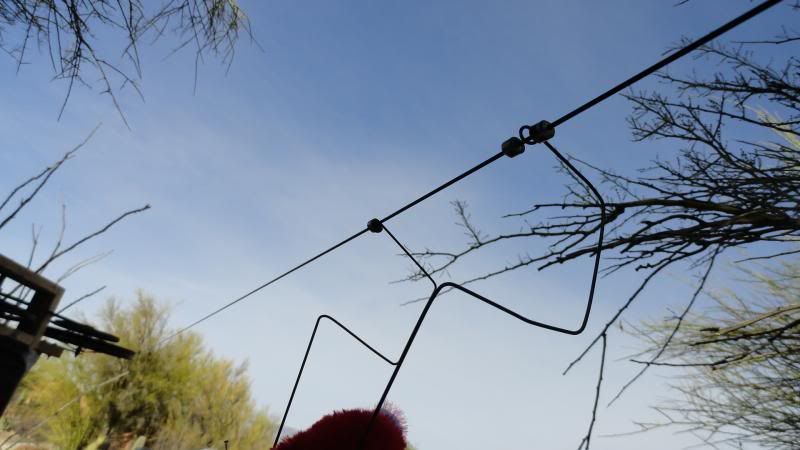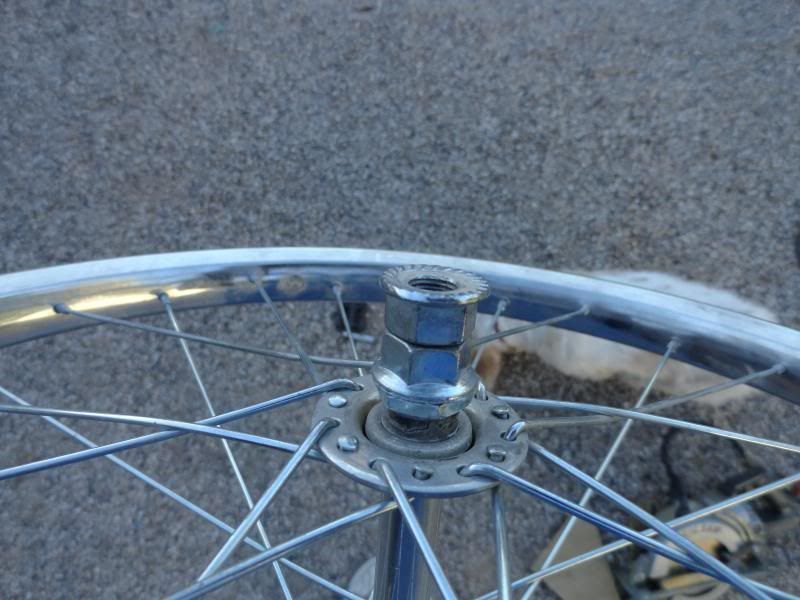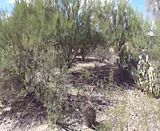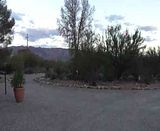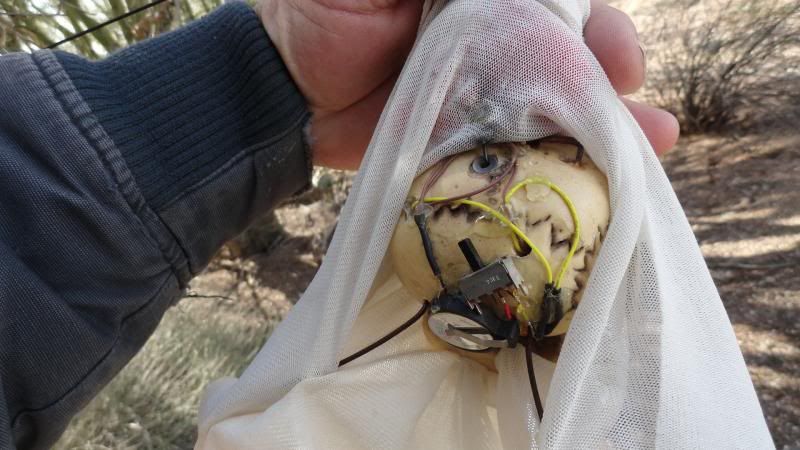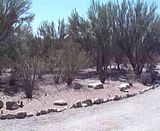I have noticed an interest in setting up the venerable Axworthy ghost and the sometimes ingenious ways that people try to make it work. I have no interest in creating a how to, but I do feel a need to share some of the secrets of the axworthy that no one touches on. I am just now starting to set up this years ghosts and thought I would take a lot of pics and video and then try to share them with my haunt buddies who have inspired me over the years. My first setup was long before internet(late 80's). It consisted of two bike wheels and a drive wheel. I used a typical 110 vac, 1250 rpm cooler motor and geared it down with pulleys. This year will be my first time using a wiper motor to pedal a bike to power the line. It should be quieter and have easier speed control. Before, I had to change pulley sizes to affect speed changes. Now I intended to use a pwm speed controller for the wiper motor but after seeing it run, I may run it full speed. We'll see.
I have been loading pictures and videos into my photobucket account linked in my signature. You will have to visit there to see the numerous pics. Look in the Axwothy folder. I will keep adding as I progress. I expect to be done in a few days.
I almost exclusively use 3/4" electrical conduit for my wheels. Putting wheels in trees is no fun and I've had spectacular results with the poles and bailing wire. I live in the desert and have a ton of natural growth so it works well for me. There are usually two guide wire for each post. Every year I will invariably trip over most of those wires cause I don't see them. Be careful. I used a 4" grinder to cut a slot in the tube, pry it open a little, then install the wheel. I like to use a couple of large nuts or 8-12 washers on one side of the wheels axle. once pinned in the axle with the correct nuts, it can be clamped in the conduit fairly darn secure. I also install a hose clamp on the conduit about two feet from the top for my anchor wires. This prevents them from slipping down. almost all wheel alignment will be done through the conduit. You will need a 3/4" conduit bender to do this easily. You should notice in the pics that every post has an "S" bend in it. This will help any twisting of the post when the ghosties are strung tight.
A couple of rules that I always follow;; Never put in an opposite turn. Have all turns in the same direction. This will allow the ghost spring wire to be fairly silent and to never be cut. Elevation changes are very acceptable and easy to deal with. Some of my pics will show a rim from the edge on. Notice that the wheel is on the same plane as the previous wheel and the next wheel. This is one of the secrets to having a reliable axworthy. The wheel at every turn, including the drive wheel, MUST be on the same plane as the line coming in to it and the line going out from it. Make sense?
If your going to spend any money on this, spend it on the important stuff. The wire that runs it all. I have used all types of fishing line and will never use them again. Fishing line is expensive and doesn't last in the sun very well. I got my cable off ebay several many years ago for $30 + shipping for 300 feet. Not much more than spiderwire, eh? I haven't tried the crab pot line.... it sounds interesting. The line that I use is steel cable. It has a black plastic coating and I believe is 3/32nds dia. I run 250 - 300 feet every year so typically I'll run 6 - 7 wheels. It's pretty big, but once its dialed in, I rarely have problems with it. I still won't run it across the street though. I'm all about the speed and reliability.
The next thing to discuss is weight of ghosties and tension on the drive line. The ghosties really need to be light as possible. You CAN actually go too light and will experience problems in turns especially if there is any wind. The ghosties need a little weight to help keep them in a down position around the turns. Having large wheels at the corners is paramount if running the ghosts at any real speed. Small wheels make the direction change too violent if there is any weight in the ghost. The tension on the drive line is pretty extreme. I struggle pulling it over that last wheel. Feels like I'm going to cut my fingers. With the cable, I don't worry about the line breaking.
OK. I'm tired of typing for now. Hopefully you can get to my photobucket album through the link below. Go to the Axworthy folder. More pics and video to come..... This from a couple of years ago.
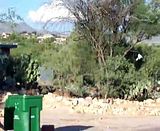
I have been loading pictures and videos into my photobucket account linked in my signature. You will have to visit there to see the numerous pics. Look in the Axwothy folder. I will keep adding as I progress. I expect to be done in a few days.
I almost exclusively use 3/4" electrical conduit for my wheels. Putting wheels in trees is no fun and I've had spectacular results with the poles and bailing wire. I live in the desert and have a ton of natural growth so it works well for me. There are usually two guide wire for each post. Every year I will invariably trip over most of those wires cause I don't see them. Be careful. I used a 4" grinder to cut a slot in the tube, pry it open a little, then install the wheel. I like to use a couple of large nuts or 8-12 washers on one side of the wheels axle. once pinned in the axle with the correct nuts, it can be clamped in the conduit fairly darn secure. I also install a hose clamp on the conduit about two feet from the top for my anchor wires. This prevents them from slipping down. almost all wheel alignment will be done through the conduit. You will need a 3/4" conduit bender to do this easily. You should notice in the pics that every post has an "S" bend in it. This will help any twisting of the post when the ghosties are strung tight.
A couple of rules that I always follow;; Never put in an opposite turn. Have all turns in the same direction. This will allow the ghost spring wire to be fairly silent and to never be cut. Elevation changes are very acceptable and easy to deal with. Some of my pics will show a rim from the edge on. Notice that the wheel is on the same plane as the previous wheel and the next wheel. This is one of the secrets to having a reliable axworthy. The wheel at every turn, including the drive wheel, MUST be on the same plane as the line coming in to it and the line going out from it. Make sense?
If your going to spend any money on this, spend it on the important stuff. The wire that runs it all. I have used all types of fishing line and will never use them again. Fishing line is expensive and doesn't last in the sun very well. I got my cable off ebay several many years ago for $30 + shipping for 300 feet. Not much more than spiderwire, eh? I haven't tried the crab pot line.... it sounds interesting. The line that I use is steel cable. It has a black plastic coating and I believe is 3/32nds dia. I run 250 - 300 feet every year so typically I'll run 6 - 7 wheels. It's pretty big, but once its dialed in, I rarely have problems with it. I still won't run it across the street though. I'm all about the speed and reliability.
The next thing to discuss is weight of ghosties and tension on the drive line. The ghosties really need to be light as possible. You CAN actually go too light and will experience problems in turns especially if there is any wind. The ghosties need a little weight to help keep them in a down position around the turns. Having large wheels at the corners is paramount if running the ghosts at any real speed. Small wheels make the direction change too violent if there is any weight in the ghost. The tension on the drive line is pretty extreme. I struggle pulling it over that last wheel. Feels like I'm going to cut my fingers. With the cable, I don't worry about the line breaking.
OK. I'm tired of typing for now. Hopefully you can get to my photobucket album through the link below. Go to the Axworthy folder. More pics and video to come..... This from a couple of years ago.



